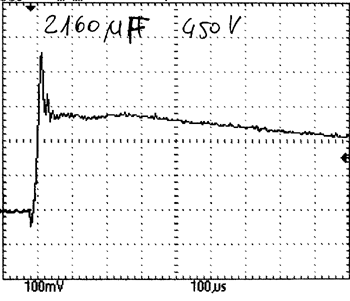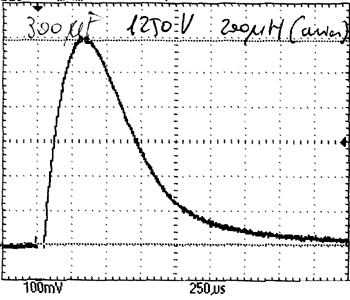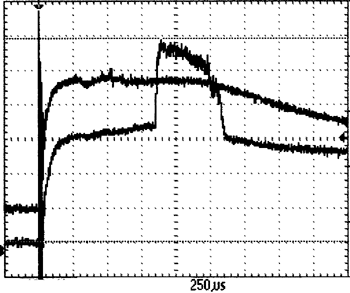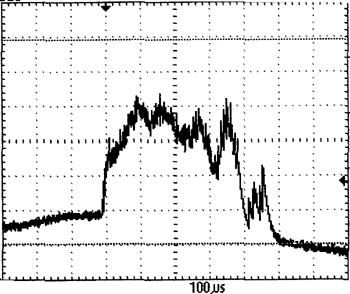|

|
|
|
|||
|
The Pulse forming Network is required for proper use of flashlamps. When the gas is ionized,a high current electric discharge flows into plasma. The current is ~ V/Req where: V is the voltage applied to flashlamp and Req is the equivalent resistance of plasma. Basically the PFN is a sort of serie resonant circuit that round off the edge of peak current. If current exceeds the maximum data rate, lamp lifetime is dramatically reduced and tube wall may darken quickly due to cathode migration. Calculation of PFN, as well as flashlamp electrical parameters, has been made with the downloadable excel sheet XenonCalculator.xls Being ruby max pumping time around 2 msec, calculation of PFN must be below 1msec. The below screenshot shows the behaviour of current with different capaticors and series A 1mOhm shunt allow the reading of several hundreds
of amperes (1mV=1A)
This shot shows the flashlamp fed with: Vc=450V; C=2160uF; E=215J, Ipeak=430A w/o series Inductor The best trade-off is on right picture: 1ms
flashtime with very stable current peak.
On left image, the relationship between optical pump vs. laser output. On right the enlarged laser emission. Measures were recorded by using a ultrafast silicon photodiode. |
|||





